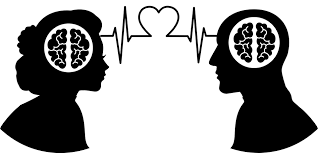
Love may well be one of the most studied, but least understood behaviours. More than 20 years ago, the biological anthropologist Helen Fisher studied 166 societies and found evidence of romantic love the kind that leaves one breathless and euphoric in 147 of them.
REWARDING OURSELVES WITH LOVE

In 2005, Fisher led a research team that published a groundbreaking study that included the first functional MRI (fMRI) images of the brains of individuals in the throes of romantic love. Her team analyzed 2500 scans of college students who viewed pictures of someone special to them and compared the scans to ones taken when the students looked at the pictures of acquaintances. Photos of people they romantically loved caused the participant’s brains to become active in regions rich with dopamine, the so-called feel-good neurotransmitter. Two of the brains regions that showed activity in the fMRI scans were the caudate nucleus a region associated with reward detection and expectation and the integration of sensory experiences into social behaviour and the ventral tegmental area, which is associated with pleasure, focused attention, and the motivation to pursue and acquire rewards.
The ventral tegmental area is part of what is known as the brain’s reward circuit. some of the other structures that contribute the reward circuit the amygdala, the hippocampus, and the prefrontal cortex are exceptionally sensitive to behaviour that includes pleasures such as sex, food consumption, and drug use.
When we are falling in love, chemicals associated with reward circuit flood our brain, producing a variety of physical and emotional responses such as racing hearts, sweaty palms, flushed cheeks, feelings of passion and anxiety. Levels of the stress hormone cortisol increase during the initial phase of romantic love, marshalling our bodies to cope with the ”crisis ” at hand. As cortisol level rise, levels of the neurotransmitter serotonin precipitate which is described as the ”intrusive”, maddeningly preoccupying thoughts, hopes, terrors of early love” the obsessive-compulsive behaviours associated with infatuation.
Being lovestruck also releases high levels of dopamine, a chemical that ”gets the reward system going ”. Dopamine activates the reward circuit, helping to make love a pleasurable experience similar to the euphoria associated with the use of cocaine or alcohol.
Other chemicals at work during romantic love are oxytocin and vasopressin, hormones that have roles in pregnancy, nursing and mother-infant attachment. Released during sex and heightened by skin to skin contact, oxytocin deepens feelings of attachment and makes couples feel closer to one another after having sex. Oxytocin, known also the love hormone, provokes feelings of contentment, calmness, and security, which are often associated with mate bonding. Vasopressin is linked to behaviour that produces long term, monogamous relationships. The differences in behaviour associated with the actions of two hormones may explain why passionate love fades as attachment grows.
In addition to the positive feelings romance brings, love also deactivates the neural pathway responsible for negative emotions, such as fear and social judgement. These positive and negative feelings involve two neurological pathways. The one linked with positive emotions connects the prefrontal cortex to the nucleus accumbens, while the other, which is linked with negative emotions, connect the nucleus accumbens to the amygdala. When we are engaged in romantic love, the neural machinery responsible for making critical assessments of other people, including assessments of other people, including assessments of those with whom we are romantically involved, shut down. ”That’s the neural basis for the ancient wisdom ‘love is blind’ ”.
LASTING LOVE

If love lasts, this roller coaster of emotions, and sometimes, angst, calms within one or two years .”The passion is still there, but the stress of it is gone”. cortisol and serotonin levels return to normal. Love, which began as a stressor to our brains and bodies, at least, becomes a buffer against stress. Brain areas associated with reward and pleasure are still activated as loving relationships proceed, but the constant craving and desire that are inherent in romantic love often lessen.
Many theories of love propose that there is an inevitable change over time from passionate love to what is typically called compassionate love, a love that is deep but not as euphoric as that experienced during the early stages of romance. That does not, however, mean that the spark of romance is quenched for long-married couples.
As a 2011 study conducted at stony brook university in New York state found that it is possible to be madly in love with someone after decades of marriage. The research team, which included Fisher, performed MRI scans on couples who had been married an average of 21 years. They found the same intensity of activity in dopamine rich areas of the brains as found in the brains of couples who were newly in love. The study suggested that the excitement of romance can remain while the apprehension is lost.
For those whose long -term marriage has transitioned from passionate, romantic love to a more compassionate, routine type of love. Now it is possible to rekindle the flame that characterized the relationships early days. This is called as the ”rustiness phenomenon”.couples get out of the habit of sex, of being incredibly in love, and often for good reasons: work, children, a sick parent. But that type of love can be reignited”. sexual activity, for example, can increase oxytocin levels and activate the brain’s reward circuit, making couples desire each other.
This alone may be enough to bring some couples back to those earlier, exhilarating days when all they could think about was their newfound love.
Leave a comment